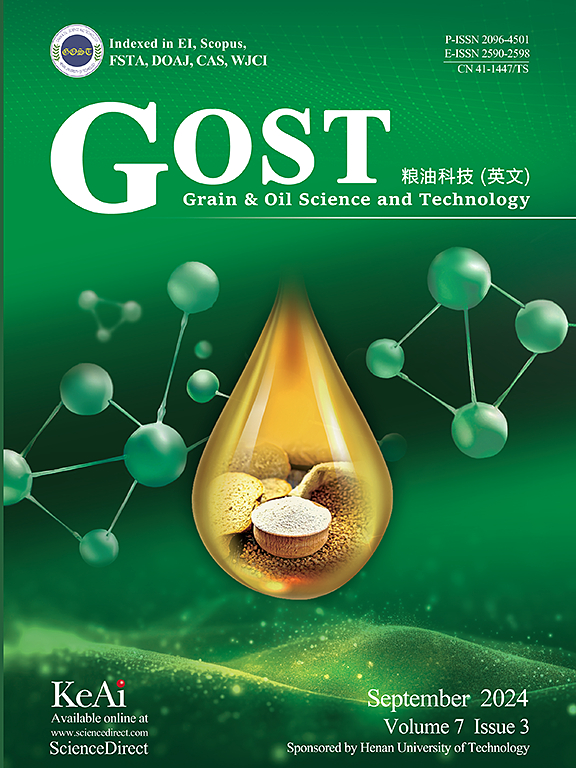影响花生油质量的有害物质控制技术综述
Q2 Agricultural and Biological Sciences
引用次数: 0
摘要
花生是全球重要的豆科作物,也是重要的油料作物之一。为了满足对高品质花生油日益增长的需求,加工技术的进步导致了花生油质量的显著提高。然而,由于影响花生油特性的多方面因素,确保始终如一的质量仍然是一项复杂而持续的挑战。本文综述了针对这些因素的关键科学研究,并探讨了相关的油品质量和安全风险。特别关注有害污染物,如黄曲霉毒素B1 (AFB1)、3-氯-1,2-丙二醇酯(3-MCPDE)、苯并[a]芘(BaP)和反式脂肪酸(tfa),它们构成重大健康风险和质量问题。该综述严格审查了这些污染物的现有检测方法,并评估了创新的去除策略,如生物降解,物理精炼,化学处理和先进的吸附技术。此外,还讨论了原料质量、加工条件和储存对油品质的影响。综上所述,采用综合方法控制有害物质,优化加工参数对提高花生油品质具有重要意义。这些发现旨在指导研究人员和行业从业者改进生产实践,最大限度地降低健康风险,并为消费者提供更安全、更高质量的花生油产品。本文章由计算机程序翻译,如有差异,请以英文原文为准。

The control technology of harmful substances impacting the quality of peanut oil: A review
Peanut is a globally important leguminous crop and one of the most important oil crops. In response to the growing demand for high-quality peanut oil, advancements in processing technologies have led to significant improvements in oil quality. However, ensuring consistent quality remains a complex and ongoing challenge due to the multifaceted factors influencing peanut oil's properties. This review synthesizes key scientific studies addressing these factors and explores the associated risks to oil quality and safety. Special attention is given to harmful contaminants such as aflatoxin B1 (AFB1), 3-chloro-1,2-propanediol esters (3-MCPDE), Benzo[a]pyrene (BaP), and trans-fatty acids (TFAs), which pose significant health risks and quality concerns. The review critically examines current detection methods for these contaminants and evaluates innovative removal strategies, such as biodegradation, physical refining, chemical treatments, and advanced adsorption techniques. Moreover, insights into the effects of raw material quality, processing conditions, and storage on oil quality were discussed. In conclusion, the review underscores the importance of adopting integrated approaches to control harmful substances while optimizing processing parameters to enhance peanut oil quality. These findings aim to guide researchers and industry practitioners in improving production practices, minimizing health risks, and providing safer and higher-quality peanut oil products for consumers.
求助全文
通过发布文献求助,成功后即可免费获取论文全文。
去求助
来源期刊

Grain Oil Science and Technology
Food Science
CiteScore
7.30
自引率
0.00%
发文量
69
审稿时长
12 weeks
期刊介绍:
 求助内容:
求助内容: 应助结果提醒方式:
应助结果提醒方式:


